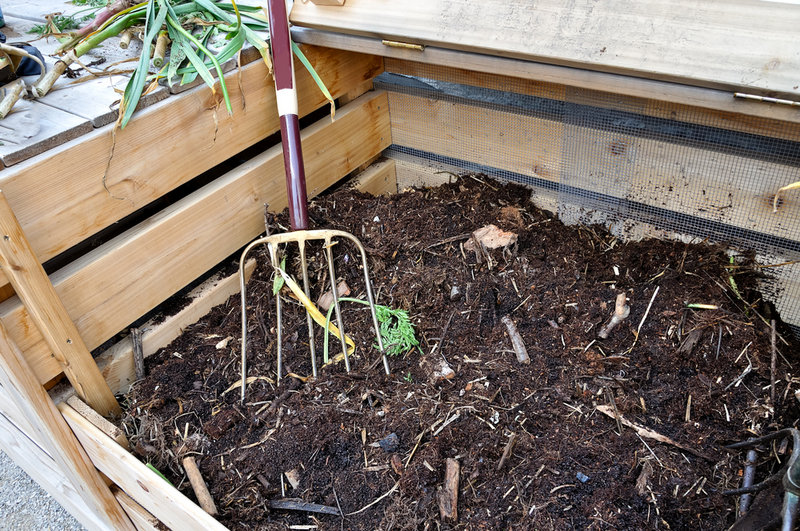A bit of chemistry might be good for your compost. Actually, we need deal with only two familiar elements: carbon and nitrogen. They’re the ones for which the “bugs” that do the work of making compost are most hungry.
Work is too strong a word, though, because these composting bugs do nothing more than eat. And a balanced diet — one balanced mostly with respect to carbon and nitrogen — does them good.
‘CARBO’ LOADING
This time of year, the microorganisms’ smorgasbord is set with an especially wide array and abundance of carbon-rich foods — essentially, old plants or plant parts. They are mostly brown and mostly dry; autumn leaves, for example. Other carbon-rich foods include wood chips, straw, sawdust, hay and even paper.
Just as we humans can’t live on bread and pasta alone (carbon rich foods, as are all carbohydrates), so it is with composting microorganisms. So let’s now peruse the smorgasbord for some nitrogen-rich fare.
The nitrogen comes mostly from proteins; microorganisms, like you and I, need both carbohydrates and proteins. Nitrogen-rich compost foods include green stuff: young, succulent plants and plant parts. There’s not much of this stuff around in autumn, but there is some, including grass clippings, kitchen scraps, and spent broccoli, pepper and other garden plants.
ROUNDING OUT THE PILE’S DIET
When there’s insufficient nitrogen foods to balance out all the carbon foods you can find for your compost, it’s time for dietary supplements. Nitrogen-rich supplements for the compost pile include manures and nitrogen fertilizers. Manures usually also add some carbon food, in the form of straw, wood shavings or whatever else was used for bedding for the animal.
No need to get out the chemistry set to analyze how rich a food is in carbon or nitrogen so that you can get them in exact balance (which, if you must know, is a ratio of 20:1). Just keep in mind that the younger the plant part, the richer it is in nitrogen. Also that rabbit manure is richer in nitrogen than is chicken manure, which is richer than, going down the line, sheep, horse, duck, cow, and, finally, pig manure.
Nitrogen fertilizers are very concentrated sources of nitrogen. One useful, organic nitrogen fertilizer is soybean meal, which is inexpensive and available at stores that sell animal feed. Just a sprinkling of any nitrogen fertilizer is all that’s needed atop every few inches of high carbon food.
COMPOST HAPPENS
So pile anything and everything that was once or is living into your compost bin, balancing carbon-rich foods with nitrogen-rich ones. After garden and backyard cleanup is finished for the season, the scale tips the other way as vegetable scraps become the most significant additions to your compost pile. Balance the food value of this nitrogen-rich material with an occasional cover of wood chips or hay from a pile you keep handy next to your compost bin.
If you want to see how you’re doing as a compost bug dietitian, monitor the goings-on in your pile with a long-probed thermometer and your nose. If the materials are moist and outdoor temperatures not frigid, the well-fed pile will be decidedly warm — 120 degrees Fahrenheit or more. Lack of heat reflects an excess of carbon-rich foods; odors are the result of excess nitrogen.
Keeping records of what you add to your compost pile and how it responds helps you remember what you did that worked. But no matter what you do, any organic material put in the pile will turn to compost — even if the process takes longer or becomes “aromatic” along the way.
Send questions/comments to the editors.



Success. Please wait for the page to reload. If the page does not reload within 5 seconds, please refresh the page.
Enter your email and password to access comments.
Hi, to comment on stories you must . This profile is in addition to your subscription and website login.
Already have a commenting profile? .
Invalid username/password.
Please check your email to confirm and complete your registration.
Only subscribers are eligible to post comments. Please subscribe or login first for digital access. Here’s why.
Use the form below to reset your password. When you've submitted your account email, we will send an email with a reset code.